Navigating the world of workplace safety can sometimes feel like wading through an alphabet soup of acronyms and regulations. One such crucial acronym that stands tall in equipment safety is “PUWER.” But what exactly does it mean? In this comprehensive guide, we’ll delve into the heart of PUWER, breaking down its meaning, understanding the regulations that anchor it, identifying the essentials of its inspection process, and exploring the training aspects that ensure equipment safety.
Whether you’re a business owner, a health and safety professional, or just a curious reader, this blog aims to shed light on every facet of PUWER, empowering you to create a safer work environment for all.
What Does PUWER Stand For? Definition and Meaning
PUWER stands for the Provision and Use of Work Equipment Regulations.
PUWER stands for the Provision and Use of Work Equipment Regulations.
Definition and Meaning:
PUWER regulations ensure that work equipment is safe to use and that businesses take adequate precautions and proactive measures to prevent any risks associated with using the equipment. The regulations cover various aspects related to work equipment, such as:
- Ensuring that the equipment is suitable for its intended purpose.
- Ensuring that the equipment is maintained in a safe and good working condition.
- Carrying out regular inspections of the equipment.
- Ensuring that those who use, operate, or control the equipment are adequately trained.
- Providing necessary safety measures, like guards or protection devices, to prevent access to dangerous parts of machinery or equipment.
In essence, PUWER aims to ensure that all work equipment is used and maintained safely, thereby reducing the risk of accidents or health hazards in the workplace.
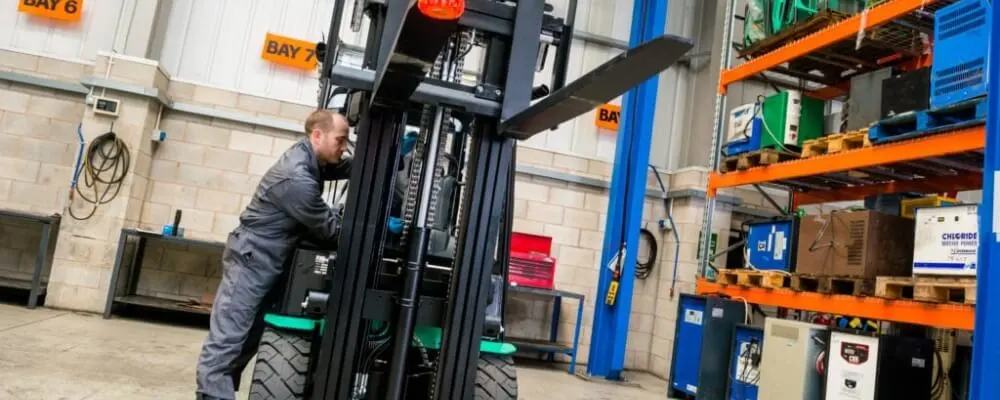
Who Enforces PUWER?
The enforcement of the Provision and Use of Work Equipment Regulations 1998 (PUWER) in the UK is primarily the responsibility of the Health and Safety Executive (HSE) and local authorities, depending on the nature and location of the workplace.
- Health and Safety Executive (HSE): The HSE is the main national body responsible for regulating and enforcing workplace health, safety, and welfare. They deal with higher-risk workplaces such as factories, construction sites, farms, hospitals, schools, and offshore industries. If there are breaches in regulations, including PUWER, the HSE can take enforcement action. This might range from advising and issuing warnings to prosecuting companies or individuals who fail to comply with the law.
- Local Authorities: For lower-risk workplaces, such as retail shops, offices, hotels, and some leisure activities, the enforcement responsibility lies with the local authority’s environmental health officers. Like the HSE, they can advise, warn, and prosecute where necessary.
Both these entities work toward ensuring that employers and businesses comply with the regulations set out under PUWER to maintain a safe working environment for everyone. They also provide guidance, support, and resources to help businesses understand and meet their obligations under PUWER and other health and safety regulations.
PUWER Regulations
PUWER, or the Provision and Use of Work Equipment Regulations, is a set of regulations in the UK that deals with the safety of work equipment used in various workplaces. Here’s a comprehensive explanation of the PUWER regulations:
Purpose of PUWER:
- Ensure that work equipment does not result in health and safety risks, irrespective of age, condition, or origin.
- To guarantee that equipment is suitable for its intended task, is maintained, inspected regularly, and used by adequately trained people.
Scope:
- PUWER applies to all workplaces and work situations where the Health and Safety at Work Act (HSWA) is applicable. This includes factories, offshore installations, agricultural settings, offices, shops, hospitals, etc.
- It covers all work equipment, defined as any machinery, appliance, apparatus, tool, or installation used for work.
Main Requirements of PUWER:
- Suitability: Equipment must be suitable for its intended purpose.
- Maintenance: Work equipment should be maintained in good working order and safe condition.
- Inspection: Regular inspections are required after installation and at suitable intervals to ensure the continued safety of the equipment. Inspections are also necessary if exceptional circumstances could have affected the equipment’s safety.
- Specific Risks: Where specific risks have been identified (e.g., entanglement in machinery), measures must be taken to manage those risks.
- Training and Information: Workers should receive adequate training and information about using the equipment safely.
- Protection and Controls: Dangerous parts of machinery must be guarded. Additionally, controls for starting, stopping, and emergency stops must be present, clearly visible, and properly labeled.
- Stability: Equipment should be stabilized to prevent tip or rollover.
- Lighting: Suitable and sufficient lighting should be provided where equipment is used.
- Markings and Warnings: Equipment should bear appropriate markings for health and safety purposes and have necessary warning devices.
- Isolation: Equipment should have means to be isolated from all energy sources (like electricity).
- Mobile Equipment: Specific provisions are made for mobile work equipment, especially to ensure safety during movement and in case of overturning or falling objects.
- Specific Equipment Types: Some types of equipment have additional rules. For instance, power presses have specific requirements.
Who Does PUWER Apply To?:
- Employers, the self-employed, and people controlling work equipment are all bound by PUWER. These parties are responsible for ensuring the safety of the work equipment and its use.
Records:
- The results of equipment inspections need to be documented and kept until the next inspection. For some equipment, like power presses, the records must be kept for a specified duration.
PUWER aims to ensure that businesses have safe, appropriate, and well-maintained equipment and that workers are trained to use them properly. Non-compliance can lead to legal repercussions and significant penalties.
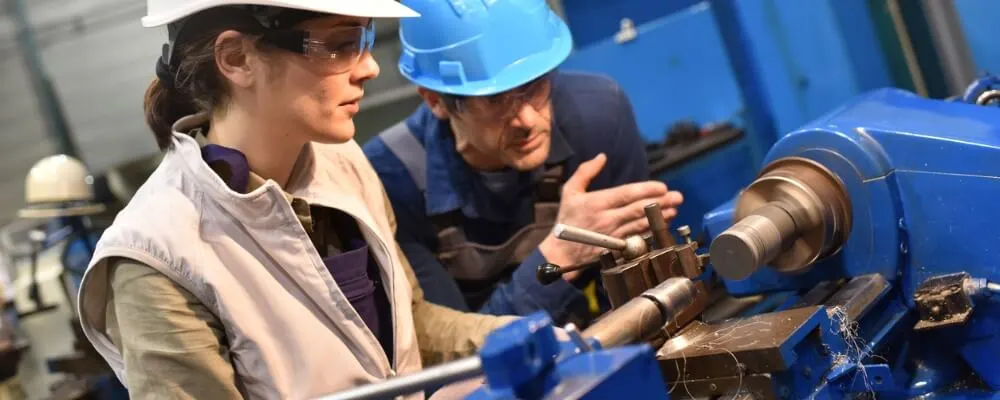
What is a PUWER inspection?
A PUWER inspection refers to an examination of work equipment in line with the requirements set out by the Provision and Use of Work Equipment Regulations 1998 (PUWER) in the UK. The main aim of this inspection is to ensure that the equipment is suitable for its intended use, is maintained in a safe condition, and is only used by those who have received adequate training.
Here’s a deeper look into the essence and components of a PUWER inspection:
- Scope of Inspection: The inspection covers all work equipment, which is a broad term that encompasses machinery, appliances, tools, and other apparatus used at work. This could range from a large industrial machine to a simple hand-held tool.
- Safety and Suitability: The primary focus is to check whether the equipment fits its intended purpose. It should be suitable for its strength, stability, and other necessary attributes to ensure safety during its operation.
- Maintenance and Condition: The equipment should be in good repair and condition. Any wear and tear, defects, or potential failure points that could lead to safety issues must be identified during the inspection.
- Safety Features: Inspectors will look for the presence and functionality of necessary safety features. This could include protective guards, emergency stop mechanisms, warning labels, and other safety-related components.
- Training and Documentation: Part of the inspection will ensure that only appropriately trained personnel operate the equipment. Clear documentation on using the equipment safely should be available, and operators should demonstrate awareness of these guidelines.
- Frequency of Inspections: Some equipment, especially those with a higher risk potential, might require more frequent inspections. The frequency will often depend on the nature of the equipment, how often it’s used, and the potential risks associated with its operation.
- Documentation of Inspection: Post-inspection, a record is usually kept detailing the condition of the equipment, any identified issues, and recommendations or actions taken. This serves as a reference for future inspections and evidence of PUWER compliance.
- Responsibility: The onus of ensuring a PUWER inspection lies primarily with employers. However, it can also extend to those controlling work equipment, such as facility managers or business owners.
In essence, a PUWER inspection is a systematic approach to ensuring that work equipment is safe for use, minimizing the risk of injuries and accidents in the workplace.
Types Of Work Equipment That Require Inspecting Under PUWER
Under the Provision and Use of Work Equipment Regulations (PUWER), virtually all work equipment requires inspection to ensure safety. The overarching principle of PUWER is that all equipment used at work is safe, appropriate for the task, and properly maintained and inspected.
However, some types of work equipment have specific mention or are more commonly associated with inspections due to their risks. Here are some of the notable categories:
- Machinery: This includes both fixed and mobile machines. Examples are lathes, drills, milling machines, saws, and more. The risk with machinery usually revolves around moving parts, sharp edges, and entanglement points.
- Power Tools: Examples include angle grinders, drills, and chainsaws. These often have sharp components, create debris or sparks, and pose risks if malfunctioning.
- Lifting Equipment: While much of the lifting equipment is governed by the Lifting Operations and Lifting Equipment Regulations (LOLER), it’s still work equipment. Examples include cranes, hoists, and lift trucks.
- Mobile Work Equipment: This category includes equipment that moves, either while working or between tasks, such as forklift trucks, agricultural machinery, and excavators. Specific regulations pertain to ensuring safety during movement, especially concerning risks of overturning or falling objects.
- Presses and similar equipment: Power presses and equipment that process materials by cutting, pressing, etc., have specific rules due to the high risks they pose.
- Equipment with Risk of Falling Objects: Any equipment with a risk of objects falling or being ejected, such as certain types of machinery or tools that process materials, would require inspection.
- Equipment Exposed to Harsh Conditions: Equipment used in demanding environments like construction sites, chemical plants, or outdoor settings might be exposed to rapid wear and tear, corrosion, or other damages and, therefore, need more frequent inspections.
- Electrical Equipment: While specific regulations cover electrical safety, any work equipment powered electrically would typically be inspected to ensure it remains safe and doesn’t pose an electrical hazard.
- Protective Equipment and Devices: This includes guards, safety barriers, interlocks, and emergency stop devices integral to the work equipment.
- Equipment with Stored Energy: This can be hydraulic systems, pressurized vessels, or even certain types of machinery that can release energy if they malfunction.
The frequency and depth of inspection will vary depending on the nature of the equipment, its usage, and the potential risks. Some equipment will require daily checks, while others might be weekly, monthly, or annually. The key is to identify potential risks and ensure that equipment is always in a condition where those risks are minimized.
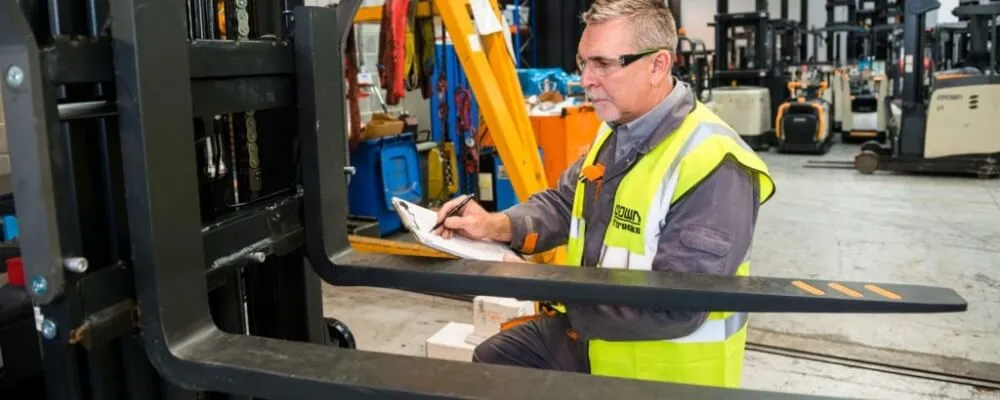
Employers’ Duties Under PUWER
Under the Provision and Use of Work Equipment Regulations (PUWER), employers have a set of specific duties and responsibilities to ensure the safety and suitability of the equipment used in their workplaces. Here are the main duties of employers under PUWER:
- Suitability of Work Equipment: Employers must ensure that their work equipment suits its intended purpose. This means it should be appropriate for the job, ensuring its design, construction, and conditions align with safety requirements.
- Maintenance: Work equipment must be maintained in an efficient state, in efficient working order, and in good repair. This requires regular inspections, servicing, and repairs when necessary.
- Inspection: Equipment should be inspected at suitable intervals to remain safe. The specifics, such as the frequency and type of inspection, will depend on the nature of the equipment and its use. Equipment should be inspected before its next use after any installation, relocation, or exposure to conditions causing deterioration that could result in a dangerous situation.
- Access and Egress: Employers must ensure that workers can access and exit all work equipment safely, especially if they need to reach parts of machinery or equipment at a height or in confined spaces.
- Risks from Falling Objects: Appropriate measures should be put in place to prevent risks to people from falling objects or ejections from the equipment.
- Information and Instructions: Employers must provide adequate information and written instructions about each piece of work equipment to ensure it’s used safely. This should cover how the equipment operates, any potential associated risks, and how those risks can be mitigated.
- Training: Employees must be adequately trained to operate the work equipment safely. This training should cover both general safety practices and specifics related to each piece of equipment.
- Health and Safety Markings: Work equipment must carry appropriate warnings and markings to alert users to potential risks. These could be hazard symbols, warning signs, or instructional labels.
- Conformity with Community Requirements: For certain types of equipment, particularly machinery, employers must ensure that it conforms with existing EU directives (or other relevant standards) related to health and safety.
- Protection Measures: If a piece of work equipment has dangerous parts or can potentially pose other risks, it should be fitted with appropriate guards or protection devices.
- Isolation from Sources of Energy: Equipment must be capable of being isolated from its energy source. This ensures it can be safely shut down, especially during maintenance or emergencies.
- Stability: Equipment must be stable during use. If there’s a risk of equipment tipping or falling, appropriate measures, like anchoring or using anti-tip devices, should be in place.
- Lighting: Adequate lighting should be provided where work equipment is used, ensuring operators can see clearly and work safely.
- Specific Risks: If the equipment poses high temperatures, explosive atmospheres, or harmful emissions, measures should be in place to mitigate these risks.
In essence, employers’ duties under PUWER are all about ensuring that work equipment is safe and suitable for its intended use and that workers can operate it without risking their health or safety.
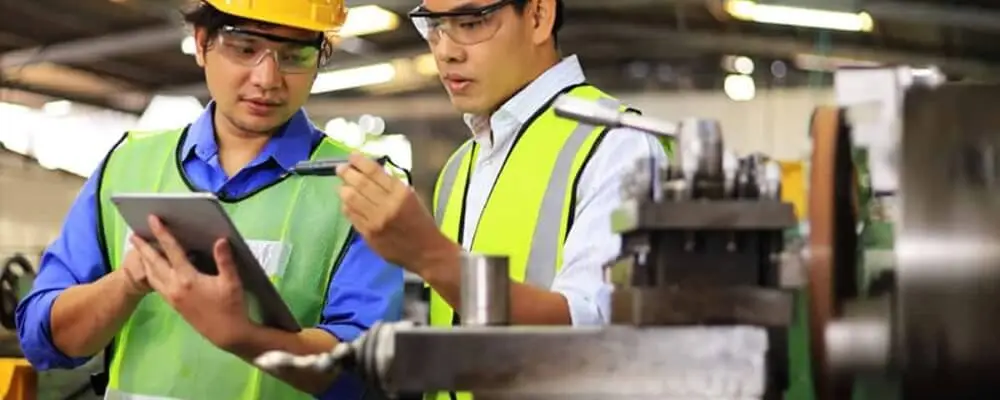
PUWER Training
PUWER training is essential for employers and employees to understand and fulfill their obligations under the Provision and Use of Work Equipment Regulations (PUWER). The training ensures that those responsible for selecting, providing, and using work equipment are competent to do so safely and in compliance with legal requirements.
Objectives of PUWER Training:
- Understanding of the Regulations: Provide a comprehensive overview of the PUWER regulations and their implications for businesses.
- Risk Assessment: Equip participants with the knowledge to assess risks associated with work equipment, identify potential hazards, and implement control measures.
- Equipment Suitability: Train participants to ascertain the suitability of equipment for specific tasks and ensure it’s fit for purpose.
- Maintenance and Inspection: Emphasize the importance of regular maintenance and inspections, including when and how to conduct them.
- Safety Measures: Educate about the various safety measures, like using guards, protective devices, and emergency stop controls.
- Operational Training: Ensure users understand the correct procedures for using equipment, including starting, stopping, and emergency procedures.
- Information and Instructions: Highlight the importance of providing and understanding clear information and instructions for each piece of work equipment.
- Employee Training: Discuss the employer’s duty to ensure all employees are adequately trained to use the equipment safely.
Typical Content of PUWER Training:
- Overview of PUWER regulations.
- Identification of work equipment covered by PUWER.
- Duties and responsibilities of employers and employees.
- Risk assessment techniques specific to work equipment.
- The significance of equipment maintenance and regular inspections.
- Practical demonstrations and examples.
- Real-world case studies of accidents and incidents related to work equipment.
- Interactive sessions, quizzes, or assessments to gauge understanding.
Who Should Attend PUWER Training?
- Health and Safety Managers and Officers.
- Managers and Supervisors are responsible for selecting or overseeing the use of work equipment.
- Employees who use or oversee the use of work equipment.
- Maintenance teams.
- Equipment suppliers or those responsible for purchasing equipment.
- Self-employed individuals who use work equipment as part of their business.
Benefits of PUWER Training:
- Compliance: Ensures your business remains compliant with legal obligations.
- Safety: Reduces the risk of accidents and incidents related to work equipment.
- Awareness: Raises awareness of potential hazards and how to mitigate them.
- Cost Savings: Reduces potential costs related to equipment breakdowns, accidents, or non-compliance fines.
- Improved Operational Efficiency: When equipment is used correctly and maintained well, it often operates more efficiently.
- Employee Confidence: Employees feel more confident and safer when using work equipment, knowing they have been trained appropriately.
Regular refresher courses are also important to ensure that staff remains up-to-date with any changes in the regulations or best practices and to ensure the ongoing safety of equipment used in the workplace.
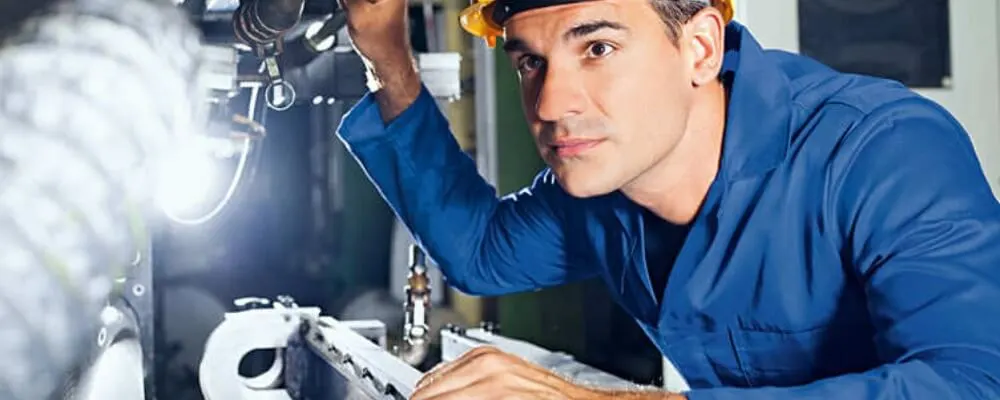
Steps to Conducting a PUWER Risk Assessment
A PUWER risk assessment revolves around the Provision and Use of Work Equipment Regulations (PUWER). Employers need to identify and manage risks associated with the equipment they provide in the workplace. The primary aim is to ensure that work equipment is suitable for its intended purpose, is safe to use, and is operated only by those who have received the required training.
1. Identification of Work Equipment
The first step in a comprehensive risk assessment is to have a clear inventory of all equipment. This is akin to taking a snapshot of your workplace tools, ranging from colossal manufacturing machines to the humble screwdriver. This holistic approach ensures that no potential hazard is overlooked, no matter how small. A detailed list facilitates more organized and structured risk management in subsequent steps.
2. Identify Potential Hazards
Every piece of equipment, whether large or small, has associated risks. For example, a conveyor belt might have moving parts that could catch clothing, while a boiler might produce extreme heat or have the potential for a pressure-related explosion. Similarly, equipment used to process or contain chemicals could pose risks of leaks or exposure. This step requires meticulously examining each equipment piece, understanding its function, and identifying any aspect that could pose a risk.
3. Evaluate Risks
Once hazards have been identified, they must be evaluated regarding the potential harm they could cause and the probability of it occurring. It’s not just about spotting the dangers; it’s about gauging their impact. An essential part of this step is considering the preventive measures already in place, such as safety barriers, auto-shutoff mechanisms, or protective gear. By assessing these, one can discern the current risk level and the gap that needs addressing.
4. Identify Users
Beyond the equipment and its hazards, it’s crucial to understand the human element. Who operates these machines? Who works nearby? It’s not just about the direct users; anyone within the sphere of influence of a piece of equipment should be considered. This ensures that safety measures cater to everyone at potential risk.
5. Evaluate Current Training and Information
Knowledge is a potent tool against accidents. This step is about assessing the information landscape of your workforce. Have the machine operators been trained sufficiently? Do they know the potential risks and how to avoid them? Moreover, it checks if this training is current and relevant, ensuring that as equipment or processes evolve, so does the knowledge of the people interacting with them.
6. Determine Additional Control Measures
Sometimes, the existing precautions aren’t enough. This phase focuses on establishing supplementary safety measures. For example, a machine without adequate protective casing might benefit from added guards. If there’s a knowledge gap among users, maybe a training session or a refresher course is in order. Implementing emergency stop controls can add an extra layer of security, and sometimes, it might be best to limit the use of specific high-risk equipment to only those who are specially trained.
7. Document the Assessment
Documentation provides a tangible record of the risk assessment process. It’s not just about ticking boxes; it’s a crucial reference tool. This written record should be comprehensive, capturing the identified hazards, the people at potential risk, the existing safety protocols, and any necessary new measures.
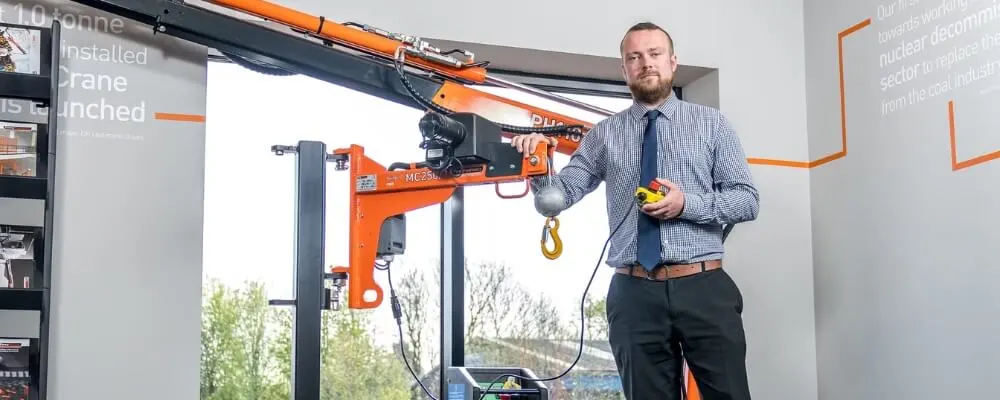
8. Implement Control Measures
Action is the heart of risk assessment. The recommended safety measures must be implemented after all the identification, evaluation, and planning. This is where the rubber meets the road. Ensuring consistent application of these controls is equally important as introducing them.
9. Review and Update
The workplace is dynamic, and risk assessment isn’t a one-off task. Machines get upgraded, processes evolve, and even the workforce changes. As such, regular reviews of the risk assessment are essential. It might be spurred by a change in equipment, a near-miss incident, or simply the passage of time, like an annual review.
10. Communication
Last but by no means least, communication is the linchpin that binds the entire process. The risk assessment findings, the changes introduced, and the recommended best practices must be disseminated to the entire workforce. This can be achieved through structured training programs, regular safety meetings, or written memos and posters. Effective communication ensures that everyone is on the same page regarding safety.
Benefits of a PUWER Risk Assessment:
- Safety: Helps ensure the safety of employees and other individuals near the work equipment.
- Compliance: Assists businesses in adhering to legal obligations under PUWER.
- Operational Efficiency: Safe and well-maintained equipment often leads to better operational performance.
- Cost Savings: Reduces potential costs related to equipment breakdowns, accidents, or non-compliance fines.
To be effective, the PUWER risk assessment should be continuous, with risks being reassessed regularly and controls adjusted as necessary. Employers should also ensure that those conducting the assessments are competent through their training or experience.
Conclusion
In wrapping up our exploration into PUWER, it’s evident that the regulations play a pivotal role in ensuring the safety and welfare of everyone interacting with work equipment. From its foundational meaning, which emphasizes the provision and appropriate use of equipment, to the meticulous regulations that set the standards, PUWER is instrumental in mitigating risks. The emphasis on regular inspections ensures that equipment remains in optimal condition, diminishing the chance of malfunction-related incidents.
Furthermore, training provisions guarantee that only competent and knowledgeable individuals operate these tools, further enhancing safety. Ultimately, understanding and adhering to PUWER isn’t just a legal necessity; it’s a testament to an organization’s commitment to safeguarding its most valuable asset – its people.

